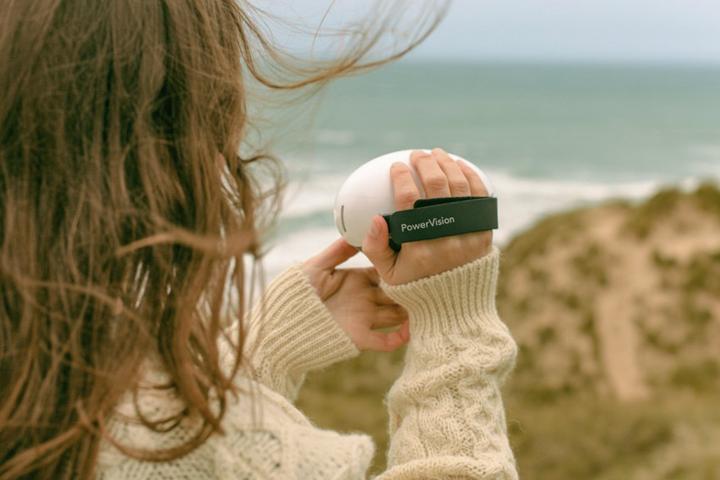The PowerEgg X is a handheld 4K camera that doubles as a waterproof drone

LAS VEGAS -- Whenever I fly a drone over water, I'm always nervous that it's going to take a dunk, and that I'm going to be out several hundred dollars. Power Vision's new PowerEgg X takes care of that with removable pontoons, but that's probably the least interesting thing about this drone.
That's because the PowerEgg X can also be used as a handheld camcorder, and has Artificial Intelligence that can recognize familiar faces and subjects, and keep them in frame for better finished videos.
PowerEgg X pricing and availability
The PowerEgg X is currently available in two configurations. The PowerEgg X Explorer kit costs $899, and includes the drone, controller, one battery, a charger, and one set of rotors. The PowerEgg X Wizard kit is $1,249, and includes all of the above plus pontoons for landing on water, a water-resistant shell for the drone, an extra battery, and three sets of rotors.

PowerEgg X design and specs
While not as compact as DJI's Mavic Air drone, the PowerEgg X has versatility going for it. Once you strap on the pontoons to its arms, you can safely land it in the water. And, to be extra sure, it also comes with a clear plastic shell that lets you fly the drone in the rain. At CES, the company flew the drone under a curtain of water, with no ill effects.
The drone's utility also extends to when it's not flying, too. You can detach its arms and clip on a hand strap, turning the drone into a little camcorder. There's even a tripod attachment.
In the front of the drone is a gimbal-mounted 3-axis camera that can take video at resolutions of up to 4K/60 fps.
When configured for flight, the PowerEgg X measures 19 x 25 x 5 inches and weighs 1.9 pounds. It can reach speeds of up to 40 miles per hour, and has a 30 minute flight time, according to the company. That's as good as the Mavic Mini. If you're using the PowerEgg X as a camcorder, you'll get about 4 hours of battery life.
Get instant access to breaking news, the hottest reviews, great deals and helpful tips.

PowerEgg X facial recognition and other features
Using "non-identifiable global big data," the PowerEgg's AI learns to look for individual faces and lock onto them when shooting video. According to the company, this feature will improve the more you — and others — use it.
The drone also has gesture control, so you can wave your hand or make some other sort of movement to start recording video or take a photo, without needing the controller. We've seen this technology in plenty of other drones, though.
Last, Power Vision has what it calls SyncVoice, which lets you speak into your smartphone to narrate a video while the drone is recording. Your voice will then be combined with the video track. While the potentially takes out a step of the editing process, you'd have to make sure you don't mess up the narration, or else you'll have to start the drone all over again.

Outlook
DJI's drones have dominated the consumer market —and our best drones page — for the past few years, and rightfully so. The company has had the most innovative designs, coupled with smart software.
With its waterproof housing, the PowerEgg X can go places DJI's drones can't, and it can even be used when it's not flying. The other possible differentiator is Power Vision's AI engine; we're curious to see how it compares to the object-tracking feature of DJI's drones, and if it's better at framing shots. At the very least, we've got an exciting new drone to try out.
Be sure to check out our CES 2020 hubfor the latest news and hands-on impressions out of Las Vegas.

Michael A. Prospero is the U.S. Editor-in-Chief for Tom’s Guide. He oversees all evergreen content and oversees the Homes, Smart Home, and Fitness/Wearables categories for the site. In his spare time, he also tests out the latest drones, electric scooters, and smart home gadgets, such as video doorbells. Before his tenure at Tom's Guide, he was the Reviews Editor for Laptop Magazine, a reporter at Fast Company, the Times of Trenton, and, many eons back, an intern at George magazine. He received his undergraduate degree from Boston College, where he worked on the campus newspaper The Heights, and then attended the Columbia University school of Journalism. When he’s not testing out the latest running watch, electric scooter, or skiing or training for a marathon, he’s probably using the latest sous vide machine, smoker, or pizza oven, to the delight — or chagrin — of his family.
